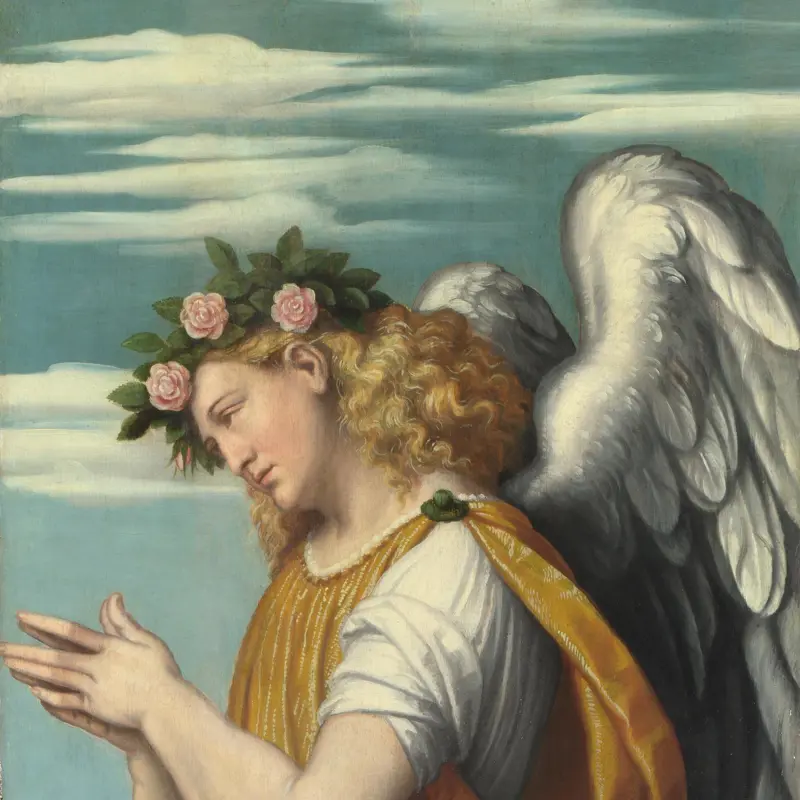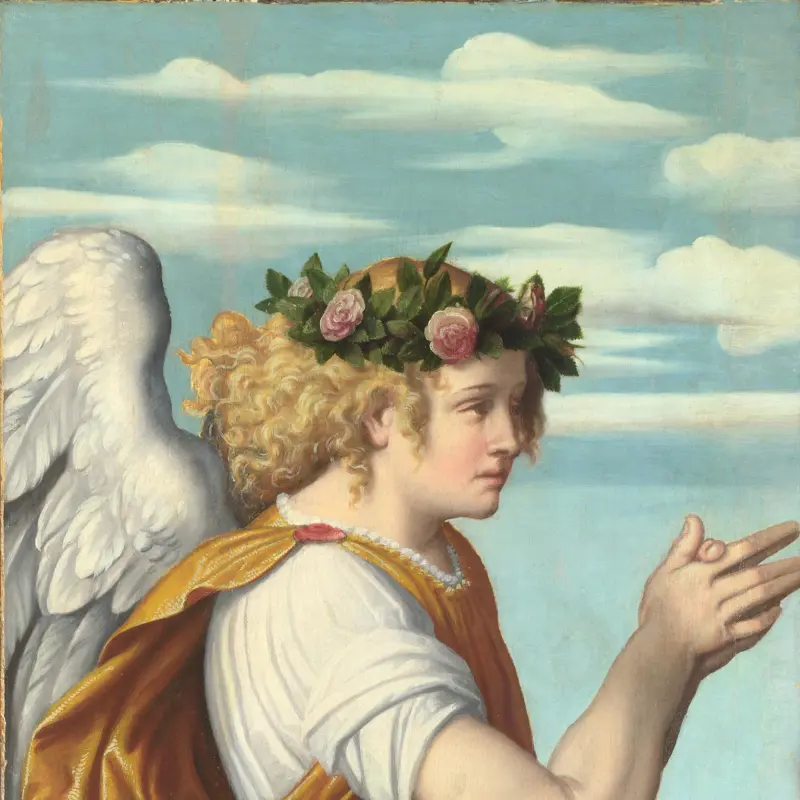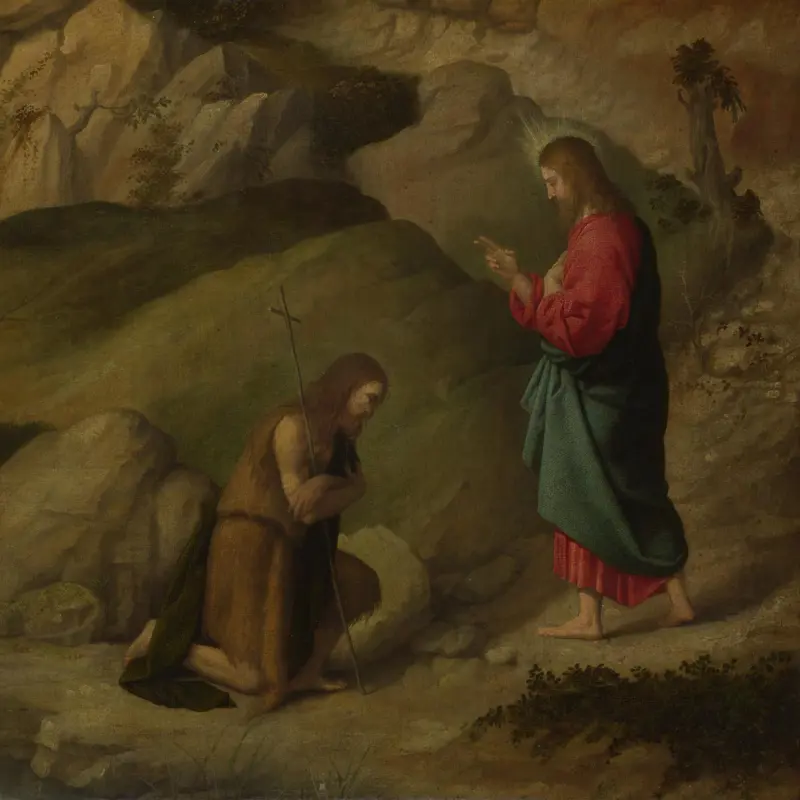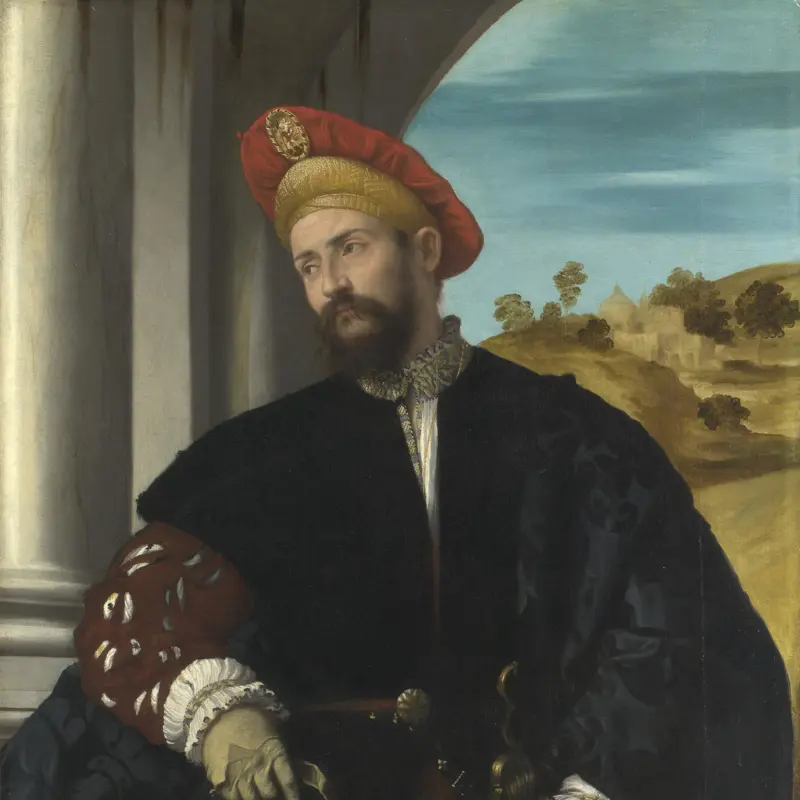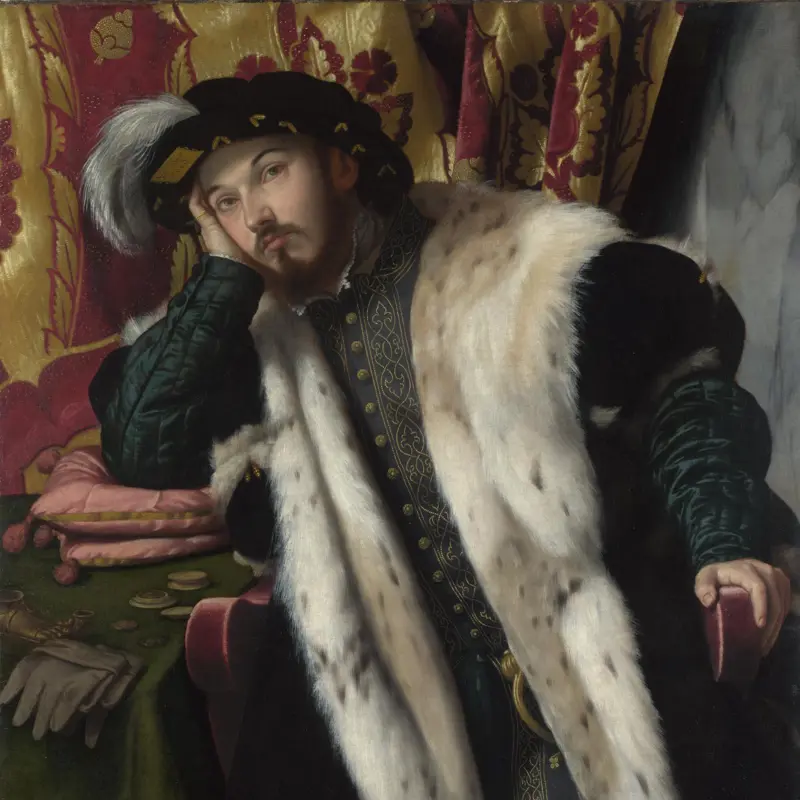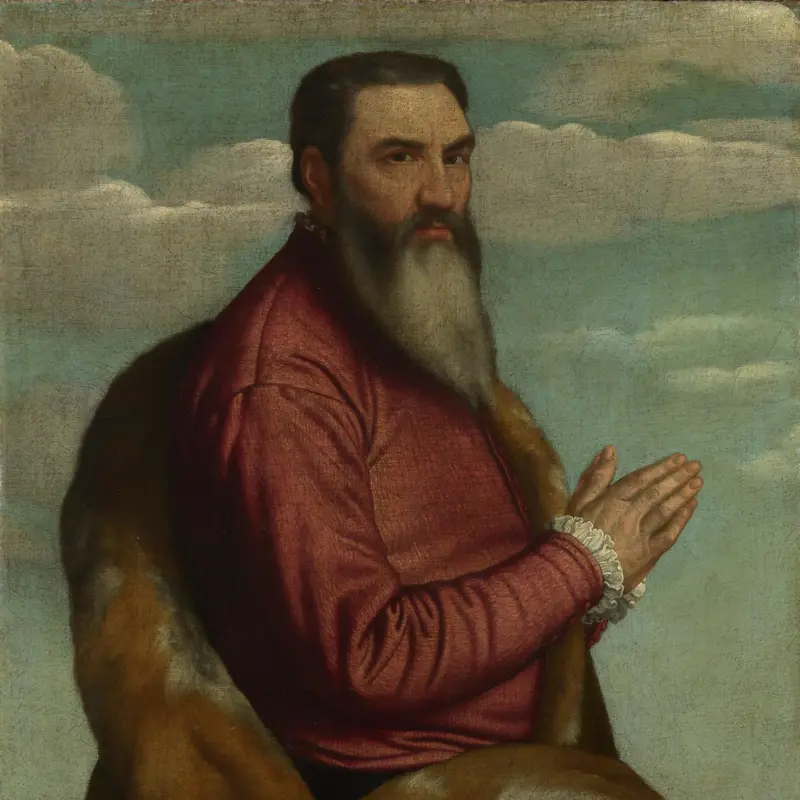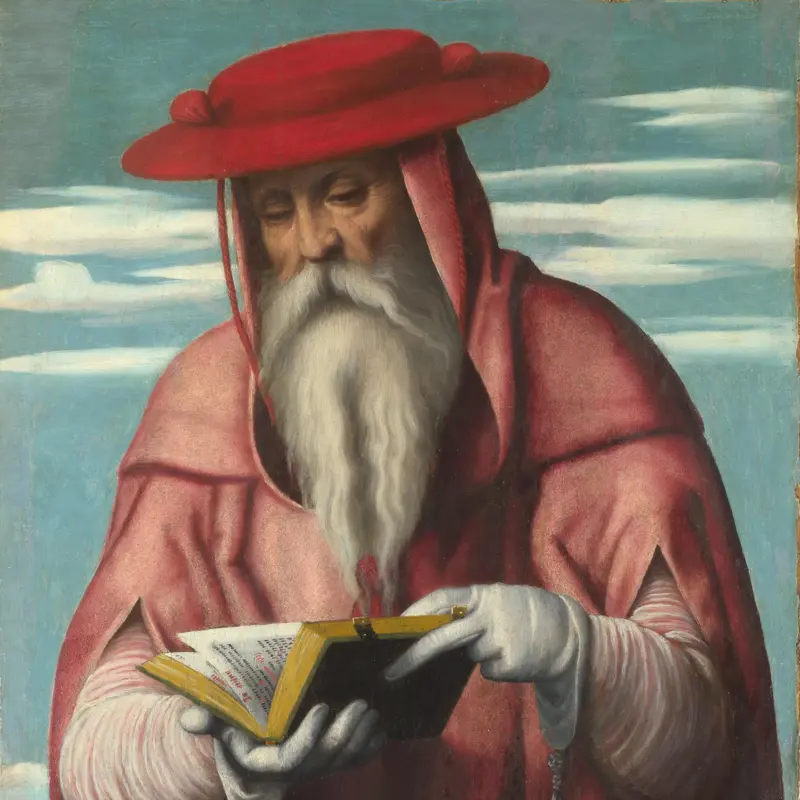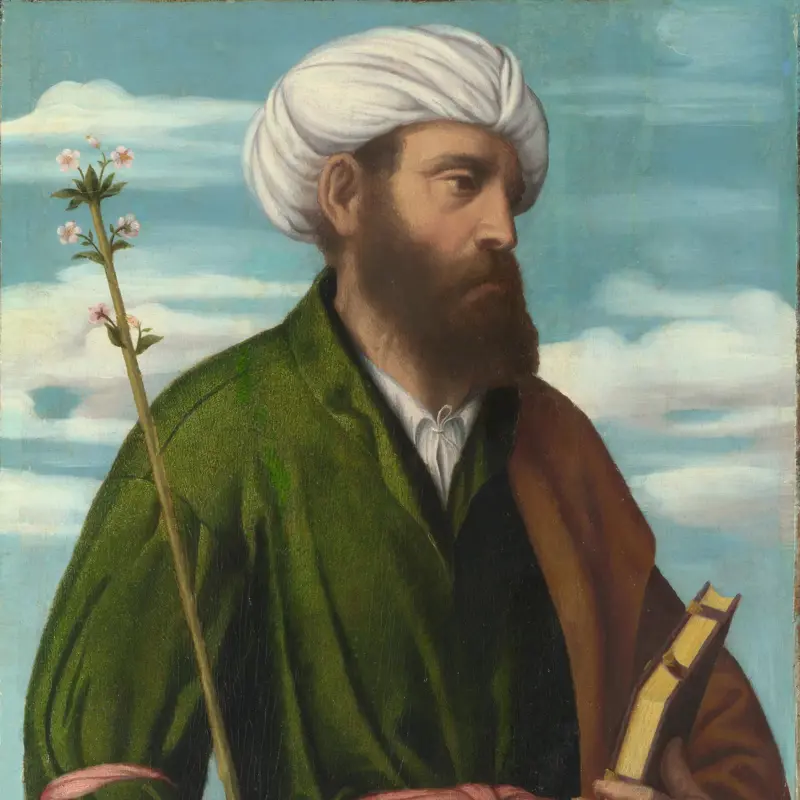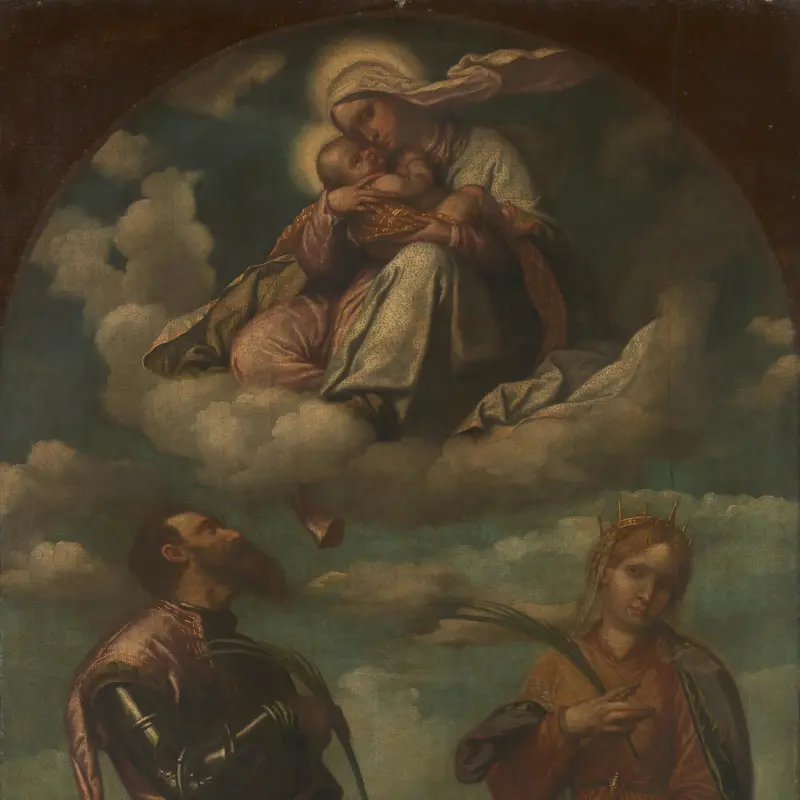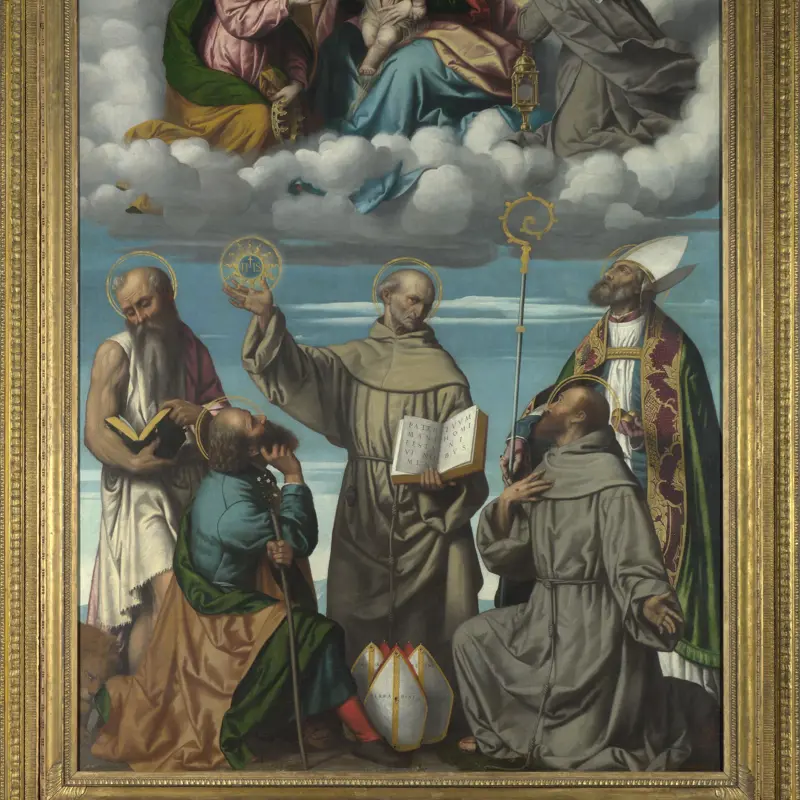Alessandro Bonvicino (called Moretto) was, with Romanino, the leading painter of Brescia in the early 16th century, when the town became part of the Venetian empire. Moretto's work was strongly influenced by Giorgione and Titian, and he may have trained in Titian's studio, though he retained much of the naturalism associated with painting in Lombardy in the 16th century.
The majority of Moretto's paintings are large-scale canvases painted for religious foundations in and around Brescia. Portraits by him are rarer, though he excelled in portraiture, passing on his skills to his most famous pupil, Moroni.
Moretto da Brescia
about 1498 - 1554
Works by Moretto da Brescia
(Showing 6 of 10 works)
This is one of four paintings of saints and angels made to decorate a pair of shutters. It was common at the time for altarpieces to have shutters to embellish and protect them. The central image these shutters would once have flanked is now missing.The Latin inscription on the plinth beneath the...
Not on display
This is one of four paintings of angels and saints made to decorate a pair of shutters. It was common at the time they were painted for altarpieces to have shutters to embellish and protect them. The angels would have been on the inside of the shutters and the saints on the outside. The central i...
Not on display
In this painting from early in Moretto’s career, Christ blesses his cousin Saint John the Baptist, who kneels beside a river, wearing a tunic of camel skin. This episode is not mentioned in the Gospels and is not otherwise known in art. It may be that Christ has just been baptised by the saint in...
Not on display
This is the earliest surviving example of a life-size, full-length portrait on canvas or panel painted in Italy. We are not certain of the sitter’s identity, but he may be Gerolamo II Avogadro of Brescia (who died in 1534). He was the father of Conte Faustino Avogadro, who is shown in a portrait...
This lavishly dressed sitter, wearing a coat lined with lynx or snow leopard fur, is the Brescian nobleman and humanist Fortunato Martinengo (1512–1552). Ancient gold and silver coins and a bronze oil lamp in the shape of a foot on the table allude to his scholarly interests, and perhaps also to...
This man may be a member of the important Averoldi family from Brescia, who once owned the portrait. He wears a soft red wool tunic and coat or cloak lined with fox fur.It is very unusual for a three-quarter-length portrait at this date to have a background consisting entirely of sky. The man’s p...
Not on display
This is one of four paintings made to decorate a pair of shutters. Each of the shutters had a saint on the outside and an angel on the inside. The central image they would once have flanked is now missing, but is likely to have represented the Virgin Mary crowned in the heavens.Saint Jerome is de...
Not on display
This is one of four panels that originally made up a pair of painted shutters to cover a central image, probably of the Virgin Mary crowned in the heavens. The outside of each shutter was decorated with a saint, the inside with an angel. When the shutters were closed, Saint Joseph would have been...
Not on display
Saint Hippolytus gazes up at the Virgin and Child in the clouds and gestures to a distant group of buildings, probably Onzato, where this painting was originally displayed, or nearby Flero.Saints Catherine and Hippolytus were both martyred by having their limbs broken as they refused to convert t...
Not on display
This altarpiece was probably made for the high altar of a Franciscan church dedicated to the celebrated preacher Saint Bernardino of Siena (1380–1444). He is shown in the centre holding the sign of the name of Jesus (IHS) and a related text from the Gospel of John.Moretto da Brescia painted sever...
Not on display
You've viewed 6 of 10 works

